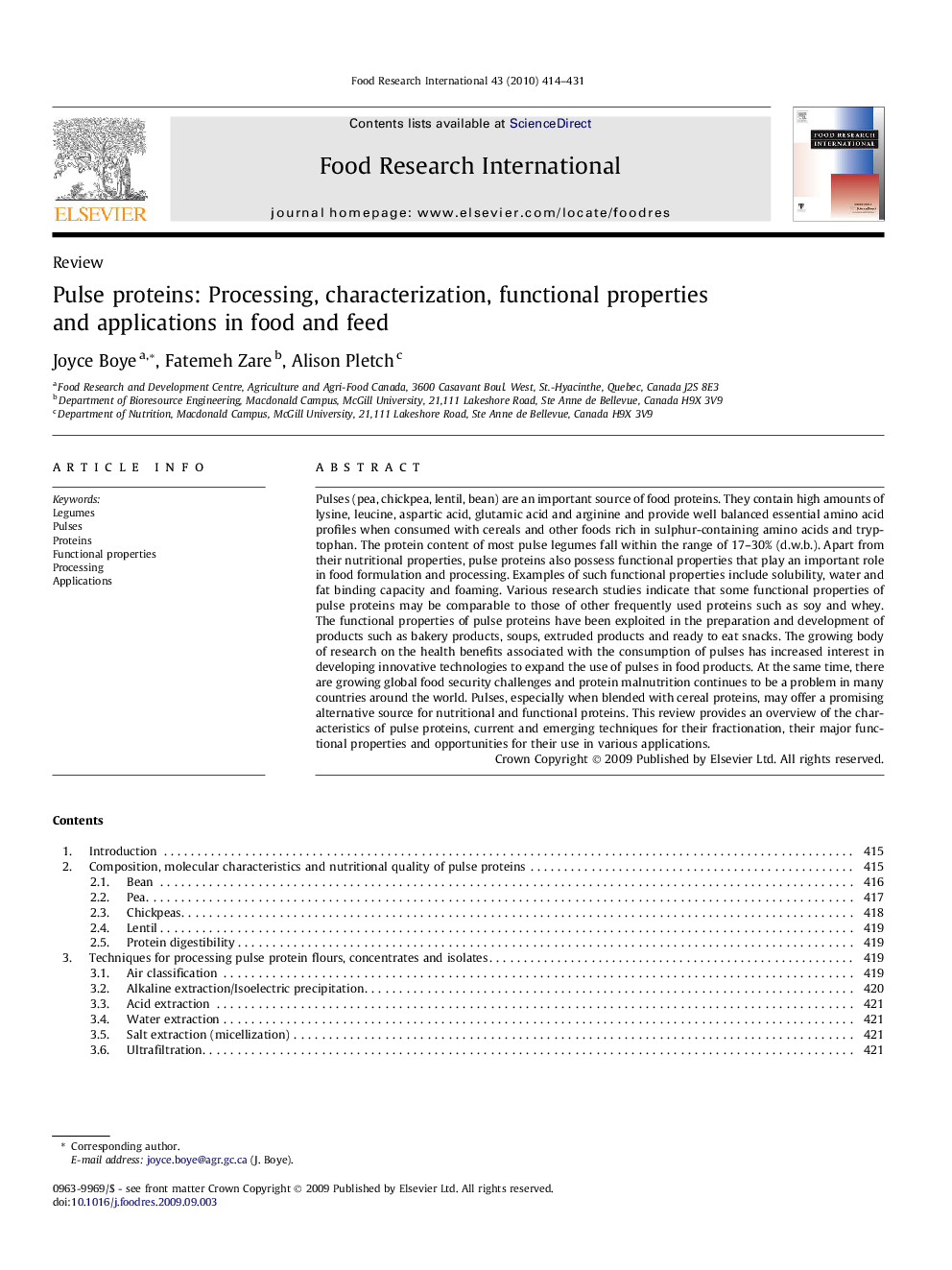| Article ID | Journal | Published Year | Pages | File Type |
|---|---|---|---|---|
| 4562725 | Food Research International | 2010 | 18 Pages |
Pulses (pea, chickpea, lentil, bean) are an important source of food proteins. They contain high amounts of lysine, leucine, aspartic acid, glutamic acid and arginine and provide well balanced essential amino acid profiles when consumed with cereals and other foods rich in sulphur-containing amino acids and tryptophan. The protein content of most pulse legumes fall within the range of 17–30% (d.w.b.). Apart from their nutritional properties, pulse proteins also possess functional properties that play an important role in food formulation and processing. Examples of such functional properties include solubility, water and fat binding capacity and foaming. Various research studies indicate that some functional properties of pulse proteins may be comparable to those of other frequently used proteins such as soy and whey. The functional properties of pulse proteins have been exploited in the preparation and development of products such as bakery products, soups, extruded products and ready to eat snacks. The growing body of research on the health benefits associated with the consumption of pulses has increased interest in developing innovative technologies to expand the use of pulses in food products. At the same time, there are growing global food security challenges and protein malnutrition continues to be a problem in many countries around the world. Pulses, especially when blended with cereal proteins, may offer a promising alternative source for nutritional and functional proteins. This review provides an overview of the characteristics of pulse proteins, current and emerging techniques for their fractionation, their major functional properties and opportunities for their use in various applications.
